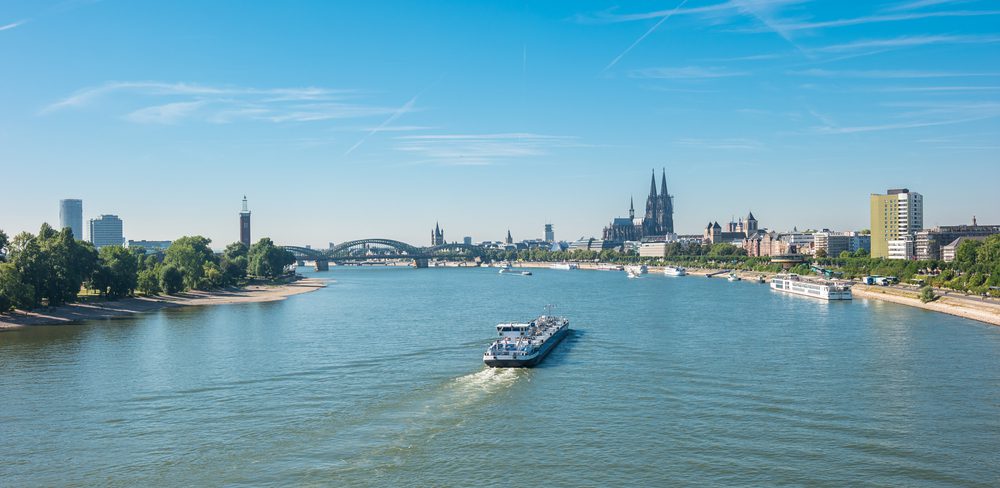Photo: r.classen / Shutterstock
By Bill Lehane (Bloomberg) — The Rhine River’s water level has slumped to the lowest for the time of year in more than a decade, choking off fuel supplies to key European markets and serving as a reminder that one of the continent’s vital industrial waterways could be susceptible to climate change.
The level at Kaub, Germany — a bottleneck point — is now at its lowest level for mid-October since at least 2006, government data show. Meanwhile, gasoil and diesel inventories at the Amsterdam-Rotterdam-Antwerp trading hub near the river’s mouth have risen to an 8-month high, according to data from PJK International.
Fuel stockpiles in the region “are rising as limited capacity can be brought to inland markets as Rhine water levels continue to be low,” Riverlake Barging BV, a Netherlands-based marine-services broker, said in a research note.
The diminishing of the Rhine — one of Europe’s most important water routes for industrial and commercial traffic — comes at a time when some fuel markets are already tight, due to many of the continent’s refineries undergoing routine seasonal maintenance. There are longer-term issues too: a study in 2015 by the International Commission for the Protection of the Rhine found there could be increased periods of low water levels after the middle of this century as a result of climate change.
Negative effects that could eventually come from lower flows and higher temperatures include restricted navigation on the river, lack of irrigation water for agriculture and reduced drinking water supply, the study said.
The current reduced water level is “making for a tight inland market,” Vienna-based research JBC Energy GmbH said in a research note. Bayernoil’s Vohburg refinery won’t restart until at least spring after a fire in September, according to the oil refiner. Other facilities conducting maintenance shutdowns this month include Tamoil SA’s Holborn refinery and BP Plc’s Gelsenkirchen plant, both in Germany.
The water level dropped for nine consecutive days through Tuesday and rose slightly to 40 centimeters on Wednesday afternoon, PJK data showed. The river is forecast to fall in the coming days to below 35 centimeters (14 inches), a level not seen since 2003, according to Riverlake Barging. Most barges can’t sail past Kaub if the barge clearance level falls below 50 centimeters, according to the broker.
The change is also having an effect on prices, with the cost of shipping gasoil to Basel, Switzerland, reaching 150 Swiss francs per ton on Tuesday, the highest in PJK data starting in 2009. Germany’s retail diesel price stood at 1,370 euros a kiloliter as of Oct. 12, the highest for the time of year since 2013, according to European Commission data.
In the short-term, no improvement is in sight for water levels. A couple of days’ significant rainfall would be needed for water levels to begin to rise again, according to German weather forecaster DWD.
“The general dry situation in Germany will continue in the next week and the low river water level will not improve,” said Andreas Friedrich, spokesman for the Offenbach, Germany-based meteorological agency. “There is no significant rainfall forecast in the next 10 days, only small amounts.”
© 2018 Bloomberg L.P

 Join The Club
Join The Club











